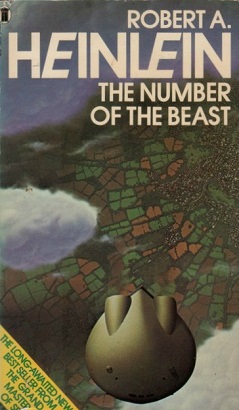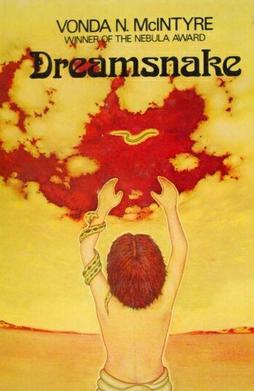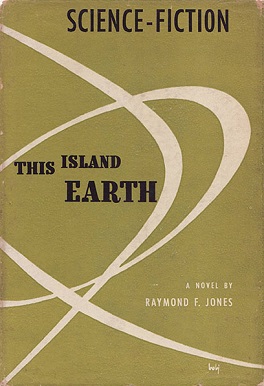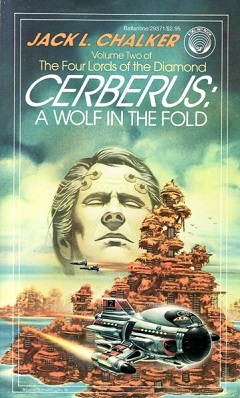
Jack Laurence Chalker was an American science fiction author. Chalker was also a Baltimore City Schools history teacher in Maryland for 12 years, retiring during 1978 to write full-time. He also was a member of the Washington Science Fiction Association and was involved in the founding of the Baltimore Science Fiction Society.

The Number of the Beast is a science fiction novel by American writer Robert A. Heinlein, published in 1980. Excerpts from the novel were serialized in the magazine Omni.

Roadmarks is a science fantasy novel by American author Roger Zelazny, written during the late 1970s and published in 1979.

Greg Costikyan, sometimes known under the pseudonym "Designer X", is an American game designer and science fiction writer. Costikyan's career spans nearly all extant genres of gaming, including: hex-based wargames, role-playing games, boardgames, card games, computer games, online games, and mobile games. Several of his games have won Origins Awards. He co-founded Manifesto Games, now out of business, with Johnny Wilson in 2005.

Jesus on Mars is a 1979 science fiction novel by American writer Philip José Farmer, set on Mars and involving an alien civilization. It makes social commentary on a just society and on religious belief.
James Davis Nicoll is a Canadian freelance game and speculative fiction reviewer, former security guard and role-playing game store owner, and also works as a first reader for the Science Fiction Book Club. As a Usenet personality, Nicoll is known for writing a widely quoted epigram on the English language, as well as for his accounts of suffering a high number of accidents, which he has narrated over the years in Usenet groups like rec.arts.sf.written and rec.arts.sf.fandom. He is now a blogger on Dreamwidth and Facebook, and an occasional columnist on Tor.com. In 2014, he started his website, jamesdavisnicoll.com, dedicated to his book reviews of works old and new; and later added Young People Read Old SFF, where his panel of younger readers read pre-1980 science fiction and fantasy, and Nicoll and his collaborators report on the younger readers' reactions.

Dreamsnake is a 1978 science fiction novel by American writer Vonda N. McIntyre. It is an expansion of her 1973 novelette "Of Mist, and Grass, and Sand", for which she won her first Nebula Award in 1974. The story is set on Earth after a nuclear holocaust. The central character, Snake, is a healer who uses genetically modified serpents to cure sickness—one snake is an alien "dreamsnake", whose venom gives dying people pleasant dreams. The novel follows Snake as she seeks to replace her dreamsnake after its death.

Lilith's Brood is a collection of three works by Octavia E. Butler. The three volumes of this science fiction series were previously collected in the now out-of-print omnibus edition Xenogenesis. The collection was first published under the current title of Lilith's Brood in 2000.
The Four Lords of the Diamond is a series of four science fiction novels by author Jack L. Chalker. Each volume of the series primarily follows a duplicate of a government agent as he lands on his prison planet and begins to both investigate the menace to the civilized worlds and find his position in his new society. The duplicates realize the stagnancy and corruption of the Confederacy, the intergalactic government in the series, and question their position as tools of the hierarchy. As the series progresses, the primary agent experiences each of his counterparts' divergent experiences and begins to question his beliefs as well. Like much of Chalker's work, the series deals with the effects physical transformations have on a character's personality.

This Island Earth is a 1952 science fiction novel by American writer Raymond F. Jones. It was first published in Thrilling Wonder Stories magazine as a serialized set of three novelettes by Jones: "The Alien Machine" in the June 1949 issue, "The Shroud of Secrecy" in the December 1949 issue, and "The Greater Conflict" in the February 1950 issue. These three stories were later combined and expanded into the 1952 novel This Island Earth. It became the basis for the 1955 Universal-International science fiction film also titled This Island Earth.
Pantropy is a hypothetical process of space habitation or space colonization in which, rather than terraforming other planets or building space habitats suitable for human habitation, humans are modified to be able to thrive in the existing environment. The term was coined by science fiction author James Blish, who wrote a series of short stories based on the idea.

Agent of Vega is a science fiction novel by American writer James H. Schmitz, published in 1960. It is a collection of stories that originally appeared separately in magazines. It was republished in 2001 as Agent of Vega & Other Stories.
There are a number of planetary objects proposed in religion, astrology, ufology and pseudoscience whose existence is not supported by scientific evidence.

Cerberus: A Wolf in the Fold is a science fiction novel by American writer Jack L. Chalker. First published as a paperback in 1982, it is the second book in the Four Lords of the Diamond series. It continues the saga started in Lilith: A Snake in the Grass, and is followed by Charon: A Dragon at the Gate and Medusa: A Tiger by the Tail'.

Charon: A Dragon at the Gate is a science fiction novel by American writer Jack L. Chalker, the third book in the Four Lords of the Diamond. First published as a paperback in 1982. It continues the saga started in Lilith: A Snake in the Grass and Cerberus: A Wolf in the Fold and is concluded by the fourth and last book called, Medusa: A Tiger by the Tail.

Medusa: A Tiger by the Tail is a science fiction novel by American writer Jack L. Chalker, the fourth book in the Four Lords of the Diamond series. First published as a paperback in 1983. It concludes the saga started in Lilith: A Snake in the Grass, Cerberus: A Wolf in the Fold and Charon: A Dragon at the Gate.

Parasites appear frequently in biology-inspired fiction from ancient times onwards, with a flowering in the nineteenth century. These include intentionally disgusting alien monsters in science fiction films, often with analogues in nature. Authors and scriptwriters have, to some extent, exploited parasite biology: lifestyles including parasitoid, behaviour-altering parasite, brood parasite, parasitic castrator, and many forms of vampire are found in books and films. Some fictional parasites, like Count Dracula and Alien's Xenomorphs, have become well known in their own right.
Their Majesties' Bucketeers is a novel by L. Neil Smith published in 1981 as part of his North American Confederacy series.
"Of Mist, and Grass, and Sand" is a science fiction short story by American writer Vonda N. McIntyre. First published in Analog Science Fiction and Fact in October 1973, it was anthologized multiple times, and also formed the first chapter of McIntyre's 1978 novel Dreamsnake. Set after a nuclear holocaust, "Of Mist, and Grass, and Sand" tells of Snake, a healer who uses the venom of three genetically engineered snakes to heal, and follows her effort to heal a nomad boy of a tumor. The story won the Nebula Award for Best Novelette in 1974. It was also nominated for the Hugo Award in the same category, and for the Locus Award for Best Short Fiction. Scholar Anne Hudson Jones called it a powerful story, and stated that its themes were "mythic and universal".
Bibliography of science fiction and fantasy writer Jack L. Chalker:













